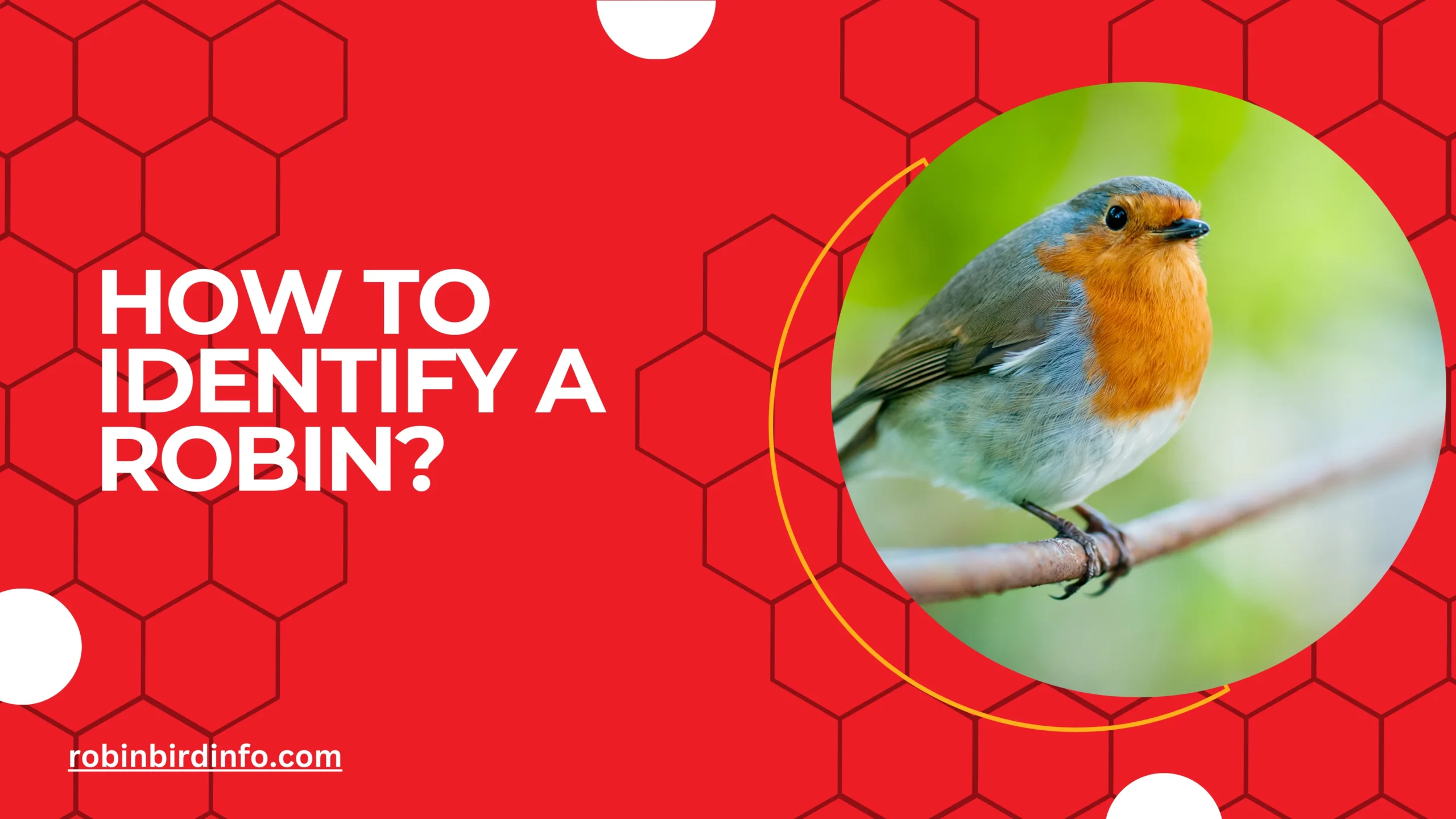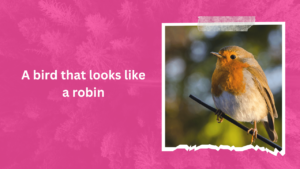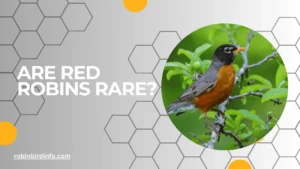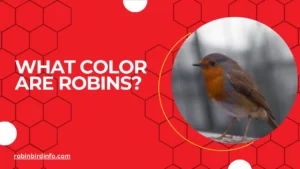Have you ever gazed out your window, mesmerized by the cheerful song of a bird perched on a nearby branch?
Perhaps it sported a vibrant red breast, its head held high, pouring its heart out in a melodic serenade. Chances are, you were witnessing the charm of a familiar friend – the American Robin.
But beyond the melodious song and friendly demeanor lies a fascinating world waiting to be explored.
Identifying Robins may seem like a simple task, but with several bird species sharing similar features, confusion can arise. But fear not, nature enthusiast! This blog post is your one-stop guide to unlocking the secrets of Robin identification.
By delving into their physical characteristics, unique behaviors, and preferred habitats, you’ll soon become a Robin expert, transforming your backyard observations into a thrilling game of discovery.
So, grab your binoculars, sharpen your observation skills, and get ready to embark on a journey to identify the Robin in all its glory!
Contents
Section 1: Physical Characteristics of American Robins
Size and Shape: American Robins are medium-sized birds, typically around 10 inches in length. They have a plump body and a relatively long tail.
Plumage: Adult male Robins are easily recognizable by their bright reddish-orange breast. Females and juveniles have a more subdued brown breast. Both sexes have a dark head and back, as well as a white eye ring.
Bill and Legs: Robins have a straight, pointed bill that is ideal for foraging for worms and insects. Their legs are sturdy and adapted for walking and hopping on the ground.
Section 2: Behavior and Habits
Feeding Behavior: Robins are primarily ground-foraging birds, often seen hopping along lawns and gardens in search of worms, insects, and berries. They may also feed on fruits, such as berries and cherries.
Vocalizations: Robins are known for their melodious songs, which are often heard during the breeding season. They also have a variety of calls, including a sharp “chip” call and a soft “tuk” call.
Social Behavior: Robins are territorial, especially during the breeding season. They may aggressively defend their nesting territories from other birds. Outside of the breeding season, they can form loose flocks.
Section 3: Similar Species and Distinguishing Features
Eastern Bluebird: While Eastern Bluebirds may resemble Robins, they are smaller and have a distinctive blue back and a rusty-orange breast.
Other Thrushes: Several other thrush species, such as the Hermit Thrush and Swainson’s Thrush, may be confused with Robins. However, these species typically have different plumage patterns, behaviors, and habitat preferences.
Identifying Juveniles: Juvenile Robins have a more subdued brown coloration and lack the bright reddish-orange breast of adult males. However, they still retain the distinctive eye ring and overall shape of adult Robins.
Section 4: Habitat and Range
Preferred Habitats: American Robins are adaptable birds and can be found in a variety of habitats, including forests, woodlands, suburban areas, and urban parks. They are often seen in lawns, gardens, and along roadsides.
Geographic Range: American Robins are widely distributed across North America, from Alaska to Florida and from the Atlantic to the Pacific coasts.
Seasonal Migration: Many populations of American Robins migrate south for the winter, returning to their breeding grounds in the spring.
Section 5: Conservation and Citizen Science
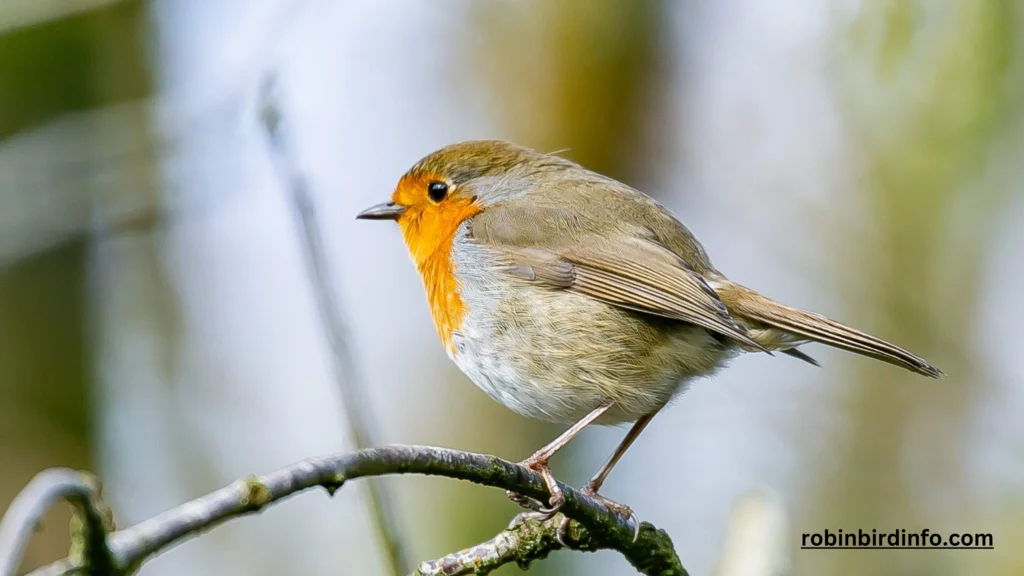
Threats to Robin Populations: American Robins face several threats, including habitat loss, pesticide use, and climate change.
Conservation Efforts: Conservation efforts aimed at protecting Robin populations include habitat restoration, reducing pesticide use, and promoting bird-friendly practices.
Citizen Science and Birdwatching: Citizen science projects, such as birdwatching and nest monitoring, can help researchers track Robin populations and identify potential threats. By participating in these projects, individuals can contribute to conservation efforts.
Conclusion
Identifying American Robins can be a rewarding experience for birdwatchers of all levels.
By understanding their physical characteristics, behavior, and habitat preferences, you can accurately identify these common backyard birds. By participating in citizen science and supporting conservation efforts, you can help ensure the continued survival of these beautiful birds.
FAQ’s
What is the most distinctive feature of an American Robin?
The most distinctive feature of an adult male American Robin is its bright reddish-orange breast.
How can I tell the difference between a male and female Robin?
Adult male Robins have a bright reddish-orange breast, while females have a more subdued brown breast. Both sexes have a dark head and back.
Do Robins migrate?
Yes, many populations of American Robins migrate south for the winter. They return to their breeding grounds in the spring.
What do Robins eat?
Robins are primarily insectivores, feeding on worms, insects, and berries. They are often seen foraging on lawns and in gardens.
Where do Robins nest?
Robins typically nest in trees, shrubs, or on buildings. They build cup-shaped nests using twigs, grass, and mud.
Can Robins be kept as pets?
No, it is illegal to keep wild birds as pets in most areas. It is best to appreciate Robins and other birds in their natural habitat.

